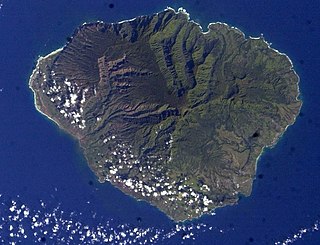
Kauaʻi, anglicized as Kauai, is geologically the second-oldest of the main Hawaiian Islands. With an area of 562.3 square miles (1,456.4 km2), it is the fourth-largest of these islands and the 21st largest island in the United States. Known also as the "Garden Isle", Kauaʻi lies 105 miles (169 km) across the Kauaʻi Channel, northwest of Oʻahu. This island is the site of Waimea Canyon State Park and the Na Pali Coast State Park.

Lihue or Līhuʻe is an unincorporated community, census-designated place (CDP) and the county seat of Kauai County, Hawaii, United States. Lihue is the second largest town on the Hawaiian island of Kauaʻi after Kapaʻa. As of the 2010 census, the CDP had a population of 6,455, up from 5,694 at the 2000 census.

The Oahu Railway and Land Company, or OR&L, was a 3 ft narrow gauge common carrier railway that served much of the Hawaiian island of Oahu, and was the largest narrow gauge class one common carrier in the U.S, until its dissolution in 1947.

The Lahaina, Kaanapali and Pacific Railroad (LKPRR) is a steam-powered, 3 ft narrow gauge heritage railroad in Lāhainā, Hawaii. The LKPRR operated the Sugar Cane Train, a 6-mile (9.7 km), 40-minute trip in open-air coaches pulled by vintage steam locomotives. The tracks connect Lahaina with Puukolii, stopping briefly at Kaanapali. A narrator points outs sites of interest during the trip, which crosses a 325-foot (99 m) curved wooden trestle whose elevation yields panoramic views of neighboring islands and the West Maui Mountains. The line is currently not operating and all equipment is stored west of Lahaina.

Valdemar Emil Knudsen was a sugarcane plantation pioneer on west Kauai, Hawaii.

Standard gauge was favored for railway construction in the United States, although a fairly large narrow-gauge system developed in the Rocky Mountains of Colorado and Utah. Isolated narrow-gauge lines were built in many areas to minimize construction costs for industrial transport or resort access, and some of these lines offered common carrier service. Outside Colorado, these isolated lines evolved into regional narrow-gauge systems in Maine, New York, Pennsylvania, Ohio, Iowa, Hawaii, and Alaska.
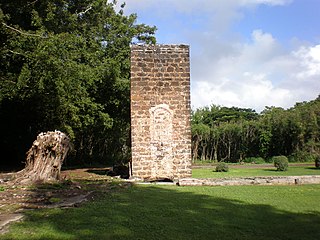
The Old Sugar Mill of Kōloa was part of the first commercially successful sugarcane plantation in Hawaiʻi, which was founded in Kōloa on the island of Kauai in 1835 by Ladd & Company. This was the beginning of what would become Hawaii's largest industry. The building was designated a National Historic Landmark on December 29, 1962. A stone chimney and foundations remain from 1840.
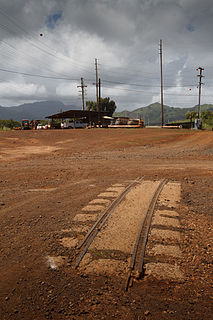
The Kauai Railway is a former narrow gauge railway company in Hawaii, United States. It was created 1906 and operated a 30-kilometre (19 mi) long railroad line with 2 ft 6 in narrow gauge track from Port Allen, to Koloa and Kalaheo on the south coast of the island of Kauai. It did not have a connection to the other common carrier railway on the island, the Ahukini Terminal and Railway, although both were built to the same track gauge. Almost all railway trackage on Kauai was connected together due to an agreement with the U.S. Government to interconnect the common carriers and sugarcane plantation railways. The government imposed this as a condition before they would agree to improve the port of Nawiliwili for oceangoing ships. The line was opened 1907. In 1936 the company name was changed to the Kauai Terminal Company. The last train ran 1947, with rail operations replaced by trucks. The company continues to exist as the present-day Kauai Commercial Company.

William Hyde Rice was a businessman and politician who served in the Kingdom of Hawaii, during the Kingdom's Overthrow, and in the following Republic of Hawaii and Territory of Hawaii governments. He collected and published legends of Hawaiian mythology.

The Olomana is a 3 ft narrow gauge 0-4-2 saddle tank locomotive built by Baldwin Locomotive Works in 1883 for the Waimanalo Sugar Company in Hawaii. It is currently in the Railroad Museum of Pennsylvania, on loan from the Smithsonian Institution. It was the third self-propelled vehicle to operate in Hawaii.
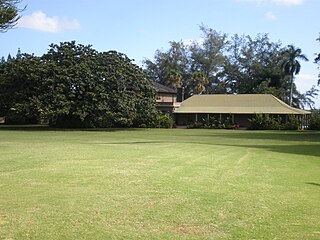
Grove Farm is a historic agricultural site on Kauai in the Hawaiian Islands.
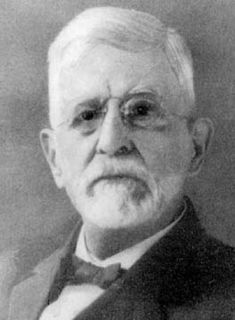
George Norton Wilcox was a businessman and politician in the Kingdom of Hawaii and Territory of Hawaii.

William Harrison Rice was a missionary teacher from the United States who settled in the Hawaiian Islands and managed an early sugarcane plantation.
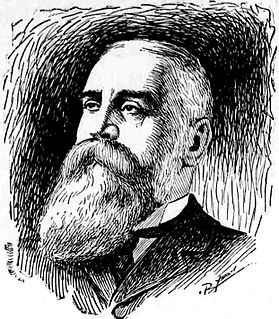
Paul Isenberg was a German businessman who developed the sugarcane business in the Kingdom of Hawaii.

Abner Wilcox was a missionary teacher from New England to the Kingdom of Hawaii.
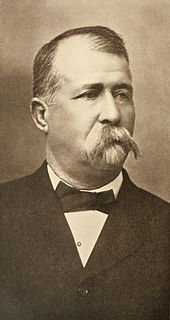
Albert Spencer Wilcox was a businessman and politician in the Kingdom of Hawaii and Republic of Hawaii. He developed several sugar plantations in Hawaii, and became a large landholder.

The Kilauea Sugar Plantation Railway or Kilauea Track Line was 1881–1944 a 12 1⁄2 miles (20 km) long narrow gauge railway network with a gauge of 2 ft for transporting sugarcane and sugar at the Kilauea Sugar Plantation in Kilauea on Kaua'i of Hawaii.
The economic history of Kaua’i, anglicized as Kauai, dates back to before the European colonization of Kauai and, in whole, Hawaii. Before Captain James Cook discovered the Hawaiian island chain in 1778, the native Polynesians of Kauai had a complex subsistence economy of fishing and trade among the other islands. In 1835, the first successful sugarcane plantation was established in Koloa, Kauai and was the beginning of a prosperous sugarcane industry. Sugarcane remained Kauai’s most dominant industry until the mid-20th century. Today, Kauai is a tourism-centered economy with 1,279,968 people visiting the island in 2017. Visitor spending on the island the same year exceeded $1.83 billion—a 9.3% percent increase from the previous year. However, Kauai still boasts a strong agricultural economy with corn seed being the number one crop alongside coffee, guava, and taro.



















